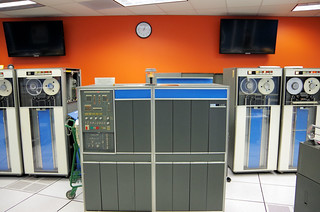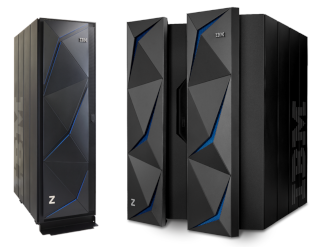TL;DR: Mainframes are cool and I’m joining the IBM Z team to tell everyone why.
I started attending Linux Users Group meetings in 2002 when I was just dabbling in Linux as a hobby at home, but you could say my career in infrastructure when I landed my first systems administration contract gigs in 2006, and subsequent full time job as a junior systems administrator in 2007. I’ve played with unusual architectures as a hobby, including MIPS on an SGI and SPARC64 via an Sun Ultra10 that I still own, but most of my actual work has been on standard x86 machines.
At my first job as a full blown systems administrator I used homespun KVM + DRBD + Pacemaker to build a series of small, redundant clusters. I spent four years working on the OpenStack infrastructure team, during which time I also wrote a book OpenStack and ended up with my own little OpenStack cluster under my desk. From there I joined a company specializing in microservices via containers, with a focus on Apache Mesos (and another under desk cluster!), but also increasingly with Kubernetes thrown into the mix. All of this ran on commodity x86 hardware, but gave you the option of using your own servers or building your clusters in the cloud, and with containers it was easy to move your workloads between providers as you saw fit.
Through all of this, I encountered a dizzying array of deployment types across companies, but one thing that often surprised me was the continued presence of mainframes. This was merely an intellectual curiosity for me until I started talking with the IBM Z team late last year.
Like many people, I had a particular view of what mainframes were. The words “historical” and “legacy” were often floating around when I thought of them. I knew modern mainframes existed, but assumed they were merely around to support customers who needed to run their old COBOL programs. When I pictured a mainframe? It looked something like this:
Truth is, I hadn’t really put much thought into what modern mainframes are or what they provide. IBM has. New mainframes like the IBM z14 Model ZR1 just slide into your data center like most any other rack, but bring you over half a century of technical leadership in everything from virtualization to encryption to data integrity and processing. Plus, they can run Linux.
Upon talking to the the IBM Z leadership, engineers on the team, and pouring over some recent talks and slide decks at open source and infrastructure events I was convinced: mainframes have a place in modern infrastructure decisions. They solved virtualization and data storage and processing problems decades ago that the newest infrastructure tools are still figuring out. The cost is competitive for a large swath of the market. The tooling for Linux on mainframes has a lot of open source, much of it contributed directly into the Linux kernel by IBM and their Linux distribution partners.
With my open source heart warmed, ultimately what really sealed the deal for me was hard core geek love for infrastructure. Mainframes still drive a significant amount of the data processing in the world, and I knew very little about them. I was so focused on the cloud verses on-premises discussion that I’d pretty much ignored anything that wasn’t a fleet of x86 machines, and I believe my expertise in infrastructure is poorer for it.
So I’m delighted to say that in a week I’m joining the folks at IBM Z to spend the foreseeable future with them as a Developer Advocate!
I’m looking forward to blending my current knowledge of the latest and greatest x86 infrastructure tooling with the latest mainframe innovations and decades of experience the IBM Z brings to the table.
And while I probably won’t have a mainframe “under my desk,” I look forward to getting to work with them in data centers!



